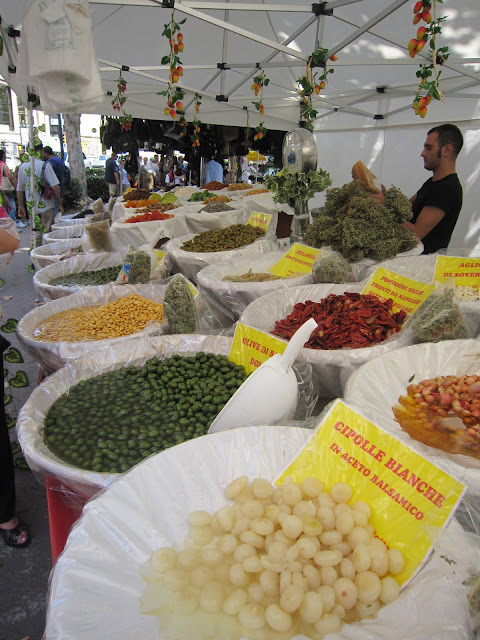It occupies the site of the Stadium of Domitiam which was built in the first century AD. It now follows the form of the open part of the stadium.
It's area is bigger than the Colloseum and it was originally used for festivals and sporting events.
The Piazza Navona is situated in the historic centre of Rome, west of the Pantheon. It is one of Romes liveliest squares with many artists and outdoor cafes.
Piazza Navona today sits metres above the original stadium level and at the northern end you can see some of the remains of the original buildings. We often hear about the Romans just building on top of the other buildings and hence there are so many excavations around Rome which are still bringing new discoveries.
Piazza Navona is a classic example of Baroque Roman architecture. In the centre of the Piazza stands the famous Fontana dei Quattro Fiume or Fountain of Four Rivers (1651) by Bernini. The four rivers depicted through the four statues at the base are the Nile, Danube, Ganges and Rio Della Plata. The base of the rock supports an Obelisk. This Fontana has just been renovated and was covered with boarding when we first arrived in April, but the boarding was taken down in early June when restoration work was completed.
The two other fountains are the Fontana di Nettuno (Neptunes fountain) at the northern end and Fontana del Moro (Moor fountain) at the southern end.
The fontana del Nettuno was built in 1576 by Giacomo della Porta. The statue, Neptune surrounded by sea nymphs was added in the 19th century.
Giacomo della Porta also built the Fontana del Moro. The central statue of a moor holding a dolphin, a design by Bernini, was added in the 17th century. The tritons are 19th century additions.
Another highlight on the square is the Church of Sant'Agnes in Agone. It was commissioned in 1652 by Pope Innocent X and completed in 1670. according to legend it was built on the site where St. Agnes was stripped naked and only saved from disgrace by her extraordinary growth of hair. The front facade of the baroque church was designed by Borromini, Bernini's main rival.
So dear firends as we leave this wonderful Piazza Navona......
amore e baci a tutti
Carolyna e Alan



































































